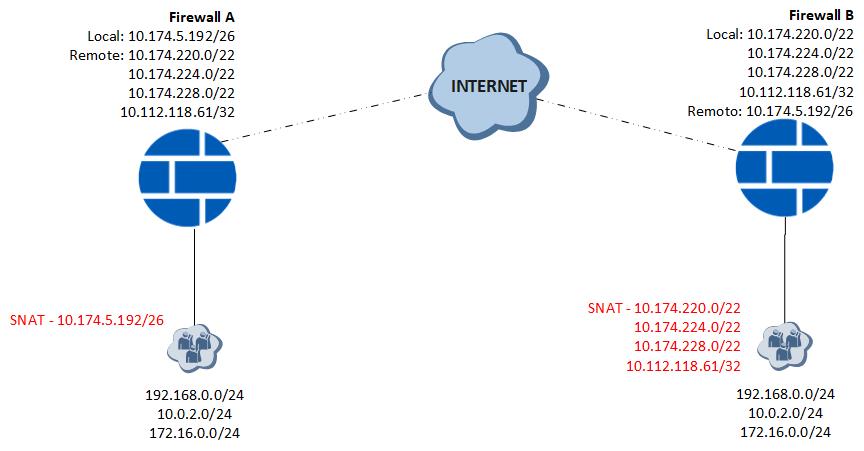Featured
Table of Contents
- – How A Vpn (Virtual Private Network) Works - How...
- – Understanding Vpn Ipsec Tunnel Mode And ...
- – What Is Ipsec? - How Ipsec Vpns Work
- – What An Ipsec Vpn Is, And How It Works
- – What Is Ipsec Protocol? How Ipsec Vpns Work
- – Guide To Ipsec Vpns - Nist Technical Series ...
- – What Is Ipsec Vpn And How Does It Work? The ...
How A Vpn (Virtual Private Network) Works - Howstuffworks
IPsec confirms and secures data packets sent out over both IPv4- and IPv6-based networks. IPsec protocol headers are found in the IP header of a package and specify how the information in a package is managed, including its routing and delivery throughout a network. IPsec adds numerous elements to the IP header, consisting of security info and one or more cryptographic algorithms.

ISAKMP is defined as part of the IKE procedure and RFC 7296. It is a framework for key establishment, authentication and settlement of an SA for a secure exchange of packages at the IP layer. To put it simply, ISAKMP defines the security parameters for how 2 systems, or hosts, communicate with each other.
They are as follows: The IPsec procedure begins when a host system recognizes that a package needs defense and ought to be transmitted utilizing IPsec policies. Such packages are thought about "fascinating traffic" for IPsec purposes, and they activate the security policies. For outgoing packets, this indicates the proper file encryption and authentication are applied.
Understanding Vpn Ipsec Tunnel Mode And ...
In the second action, the hosts use IPsec to negotiate the set of policies they will utilize for a secured circuit. They likewise validate themselves to each other and established a safe and secure channel between them that is utilized to negotiate the way the IPsec circuit will encrypt or confirm information sent throughout it.

A VPN essentially is a private network implemented over a public network. VPNs are typically utilized in organizations to enable staff members to access their business network from another location.
Usually utilized between secured network entrances, IPsec tunnel mode allows hosts behind one of the gateways to communicate securely with hosts behind the other entrance. For example, any users of systems in a business branch office can safely link with any systems in the primary office if the branch workplace and primary workplace have protected entrances to serve as IPsec proxies for hosts within the particular workplaces.
What Is Ipsec? - How Ipsec Vpns Work
IPsec transport mode is used in cases where one host needs to interact with another host. The two hosts work out the IPsec circuit straight with each other, and the circuit is usually torn down after the session is total. A Safe And Secure Socket Layer (SSL) VPN is another method to protecting a public network connection.
With an IPsec VPN, IP packages are safeguarded as they travel to and from the IPsec entrance at the edge of a personal network and remote hosts and networks. An SSL VPN safeguards traffic as it moves between remote users and an SSL gateway. IPsec VPNs support all IP-based applications, while SSL VPNs only support browser-based applications, though they can support other applications with custom advancement.
See what is best for your company and where one type works best over the other.
What An Ipsec Vpn Is, And How It Works
Each IPsec endpoint validates the identity of the other endpoint it desires to interact with, making sure that network traffic and information are only sent to the intended and allowed endpoint. Regardless of its excellent utility, IPsec has a couple of problems worth pointing out. Initially, direct end-to-end communication (i. e., transmission technique) is not constantly available.
The adoption of numerous regional security guidelines in massive distributed systems or inter-domain settings may position serious issues for end-to-end interaction. In this example, assume that FW1 requires to check traffic material to discover intrusions which a policy is set at FW1 to reject all encrypted traffic so regarding implement its content examination requirements.
Users who use VPNs to from another location access a personal service network are put on the network itself, offering them the same rights and functional abilities as a user who is connecting from within that network. An IPsec-based VPN may be produced in a variety of methods, depending upon the needs of the user.
What Is Ipsec Protocol? How Ipsec Vpns Work
Due to the fact that these parts might originate from different suppliers, interoperability is a must. IPsec VPNs make it possible for smooth access to enterprise network resources, and users do not always require to use web gain access to (gain access to can be non-web); it is for that reason an option for applications that require to automate interaction in both ways.
Its structure can support today's cryptographic algorithms in addition to more effective algorithms as they appear in the future. IPsec is a mandatory component of Web Protocol Variation 6 (IPv6), which companies are actively releasing within their networks, and is strongly recommended for Internet Procedure Version 4 (IPv4) implementations.
It supplies a transparent end-to-end safe channel for upper-layer procedures, and implementations do not need modifications to those procedures or to applications. While possessing some drawbacks connected to its intricacy, it is a mature procedure suite that supports a variety of encryption and hashing algorithms and is highly scalable and interoperable.
Guide To Ipsec Vpns - Nist Technical Series Publications
Like VPNs, there are numerous ways an Absolutely no Trust model can be carried out, but solutions like Twingate make the procedure considerably easier than having to wrangle an IPsec VPN. Contact Twingate today to find out more.

IPsec isn't the most common internet security protocol you'll use today, but it still has an important role to play in protecting internet interactions. If you're utilizing IPsec today, it's probably in the context of a virtual personal network, or VPN. As its name suggests, a VPN produces a network connection in between 2 machines over the general public internet that's as secure (or practically as safe and secure) as a connection within a personal internal network: most likely a VPN's many popular usage case is to enable remote workers to access protected files behind a business firewall software as if they were working in the workplace.
For the majority of this post, when we state VPN, we mean an IPsec VPN, and over the next a number of sections, we'll explain how they work. A note on: If you're aiming to set up your firewall software to allow an IPsec VPN connection, be sure to open UDP port 500 and IP ports 50 and 51.
What Is Ipsec Vpn And How Does It Work? The Complete ...

As soon as this has actually all been set, the transportation layer hands off the data to the network layer, which is mainly controlled by code operating on the routers and other components that comprise a network. These routers select the path private network packages require to their destination, but the transportation layer code at either end of the interaction chain does not require to know those information.
On its own, IP doesn't have any built-in security, which, as we noted, is why IPsec was established. Today, TLS is developed into virtually all web browsers and other internet-connected applications, and is more than adequate security for everyday web usage.
That's why an IPsec VPN can include another layer of protection: it includes protecting the packets themselves. An IPsec VPN connection starts with establishment of a Security Association (SA) in between 2 interacting computers, or hosts. In general, this involves the exchange of cryptographic keys that will allow the parties to secure and decrypt their communication.
Table of Contents
- – How A Vpn (Virtual Private Network) Works - How...
- – Understanding Vpn Ipsec Tunnel Mode And ...
- – What Is Ipsec? - How Ipsec Vpns Work
- – What An Ipsec Vpn Is, And How It Works
- – What Is Ipsec Protocol? How Ipsec Vpns Work
- – Guide To Ipsec Vpns - Nist Technical Series ...
- – What Is Ipsec Vpn And How Does It Work? The ...
Latest Posts
The Best Vpn For Business In 2023: Top 8 Corporate ...
8 Best Vpns For Business To Safeguard Your Network And ...
10 Best Vpn Services Of 2023: How They Stack Up
More
Latest Posts
The Best Vpn For Business In 2023: Top 8 Corporate ...
8 Best Vpns For Business To Safeguard Your Network And ...
10 Best Vpn Services Of 2023: How They Stack Up